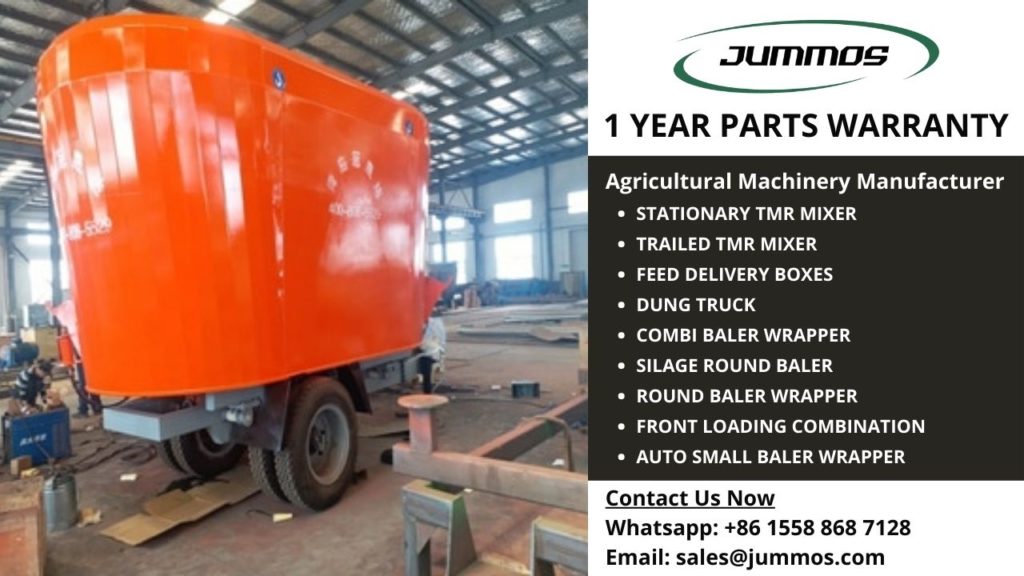The world’s agricultural mechanization is currently developing rapidly. Products such as feed mixers, bale wrappers, and livestock waste trucks are urgently needed by today’s farmers. All want the efficiency of space and time. Especially if a manufacturer’s product becomes an import-export commodity that is regularly shipped worldwide. One of the popular agricultural mechanization products is the feed mixer.
The manufacturers of feed mixers now have to compete in marketing their products. Many modern farmers or ranchers emerge and develop dynamically wherever they are. Where there is workable farmland and business plans, that’s where they grow with time, and the seeds sow. Feed mixer orders will continue to happen every time.
For this reason, manufacturers and prospective buyers must fully understand the feed mixer HS code for the import-export shipping process. HS codes are very useful in setting tariffs, recording trade transactions, and controlling transportation.
Origin of HS Code
A study group from the World Customs Organization compiled the HS Code in 1986. Its member was about 170 countries, with its headquarter located in Brussels, Belgium. Then, a convention ratified the code. As many as 70 countries, mostly European countries, also agreed to use this HS code.
So far, about 5,300 product descriptions are available, both of which are used in world trade. You will only find the same code for one product worldwide—for instance, fixed mixer HS code for the import-export process of this agricultural product.
HS code has the following purpose:
- Make it easier for companies to collect export-import statistical data and reports.
- Create uniformity in the grouping of export-import products systemically.
- Holding an official system on an international scale regarding the description, classification, and code of export-import trade products.
Six Digit HS Code
All countries agree to classify their international trade products using the HS code or Harmonized System code which is only six digits. This is the international standard for the naming and numbering system of trade product classifications. The government in a country can use its policies to develop this HS code to be more specific. However, the six digits HS code must remain. HS code, including feed mixer HS code is formed from the rules as below:
- The first four digits are World Customs Organization Post (WCO Post). All HS worldwide has the same four digits for the same item. For instance, the first four digits of the feed mixer HS code worldwide is 8436. This includes agricultural, horticultural, forestry machinery, roll crushing machinery, feed mixers, poultry food processing machinery, beekeeping machinery, shoot machines, incubators, poultry hatchers, animal feed mixing machines, and similar ones.
- The first two digits are the main classification or what is known as the chapter. We take from feed mixer HS code 8436 where the code “84” means engine or mechanical aircraft.
- The first six digits are the subheadings. You can get all the digits of the HS code for the item you are looking for through the website of your local customs office.
HS Code Identification Suggestion
You may be looking for feed mixer HS codes and the codes for other export agricultural machines. Make sure you don’t get lost anywhere. You just need to make the following identification on the customs website in your country:
- Identification of the first two digits of the export product specifications you’re looking for can be seen from these first two digits.
- Study the explanation that opens in the notes in the Chapter.
- Find out if there is a Post in it. The Post is the first four digits that match the specifications of the export product you’re looking for. For example, for the feed mixer HS code, the first four digits are 8436.
- To go to the more specific identification of the export product, you must find the Subheading after finding the Heading. After you get the eight digits, then you will be able to find out the rates that apply to the export product.
- You should always remember that one product may have several HS codes. You need to be careful in choosing the HS code and always discuss this with related parties, such as the seller of the feed mixer and other machines.
Especially for a reliable feed mixer, you can entrust it to Jummos. We provide many machines that are suitable for your needs, such as TMR machines, dung trucks, bale wrappers, trailed TMR mixers, and many more. Contact us soon to get your first feed mixer.

